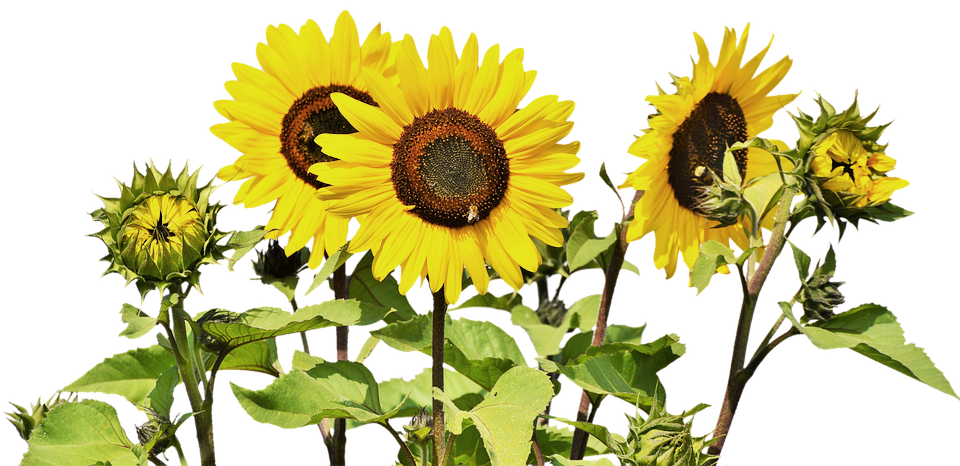
Container Design 101
By Chris Edmunds
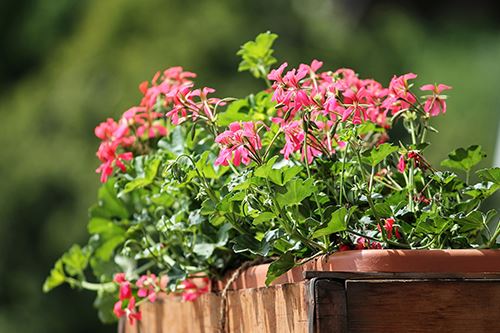
One of the great things about container gardens is just how customizable they are. There are hundreds upon thousands of ways to make them your own in all stages of the process, from choosing the container through planning and designing, to the planting, and even the maintenance of it all. Even with something as a simple as a compact container, the possibilities are endless to create your own masterpiece. The team at our garden center in Derby had these great container design tips to share.
Container Gardening and Design
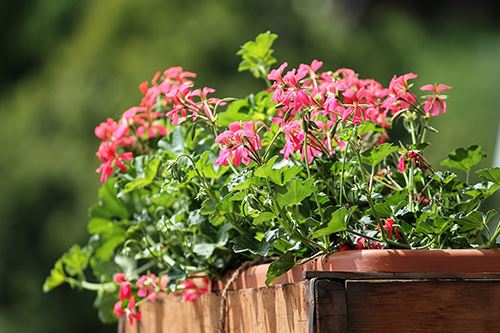 Container gardens are tremendously versatile. They add visual appeal in expansive landscapes, patios, decks and tiny apartment balconies alike. Containers have the ability to become a part of your decor and the aesthetic you’ve created. They serve not only to contain your garden, but to accent it while creating an inviting and relaxing environment. Not to mention, they have an added level of mobility that beds simply don’t and moving them to serve different purposes is as easy as moving around your living room furniture.
Container gardens are tremendously versatile. They add visual appeal in expansive landscapes, patios, decks and tiny apartment balconies alike. Containers have the ability to become a part of your decor and the aesthetic you’ve created. They serve not only to contain your garden, but to accent it while creating an inviting and relaxing environment. Not to mention, they have an added level of mobility that beds simply don’t and moving them to serve different purposes is as easy as moving around your living room furniture.
Creating Your Container Garden Design
While you may feel tempted to get straight to planting, taking the time to plan will allow you to get the most out of your container garden. Garden beds generally require more thought, but containers also need some basic considerations to help you achieve your visual design goal.
Preparing Your Design
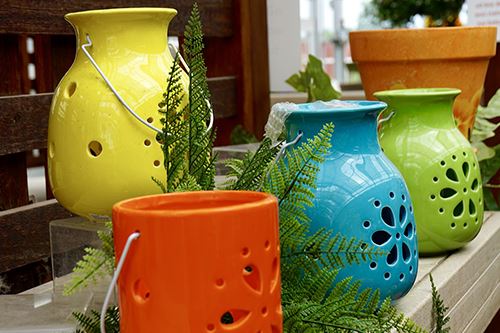 You’ll want to start by selecting your planter. For a lasting living space for your plants, you’ll want a container that is strong and durable with room in it for your plants to expand their roots as they grow.
You’ll want to start by selecting your planter. For a lasting living space for your plants, you’ll want a container that is strong and durable with room in it for your plants to expand their roots as they grow.
You should also consider the drainage. Containers with holes in the bottom are essential because they allow excess water to flow freely from the bottom, preventing root rot and salt build-up.
Another thing to think about is watering needs. Depending on the plants you select, and the size of the pot, you may need to water as much as every day. The smaller the pot, the quicker it dries out. Can you commit to watering every day? If not, you may want to consider plants, such as succulents, requiring less frequent care so you can enjoy the plants you want with the schedule you have.
Once you’ve found the right pot, you’re ready to pour in fresh potting mix and get to work.
Planning Your Design
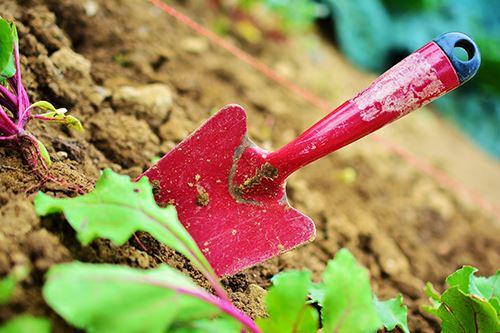 Choosing plants that are compatible is also important since they’ll be sharing the same environment. To prevent any issues from arising, you’ll want to select plants that have similar needs. For example, you would not want to pair a full-sun annual with a shade-dweller. You also wouldn’t want to pair a plant that is super-vigorous with one that stays small and compact, as it may get swallowed up.
Choosing plants that are compatible is also important since they’ll be sharing the same environment. To prevent any issues from arising, you’ll want to select plants that have similar needs. For example, you would not want to pair a full-sun annual with a shade-dweller. You also wouldn’t want to pair a plant that is super-vigorous with one that stays small and compact, as it may get swallowed up.
Beyond physical needs, you’ll want to plan your selections for visual appeal, too. Think about the colors you are pairing together. For a more unified look, choose plants with complimenting colors. Or select contrasting colors for a more striking presentation.
You’ll also want to think about the heights each plant will have at maturity to know where to position them in your container. If your container is against a wall and will be only viewed from the side, you’ll want your tallest plants at the back and the shortest in the front, so nothing gets lost or hidden from the sun. If your container can be viewed from all sides, your taller plants should be placed in the center. Place shorter plants around those taller ones for “filler” and add some trailing plants around the edges of the container for some spilling appeal.
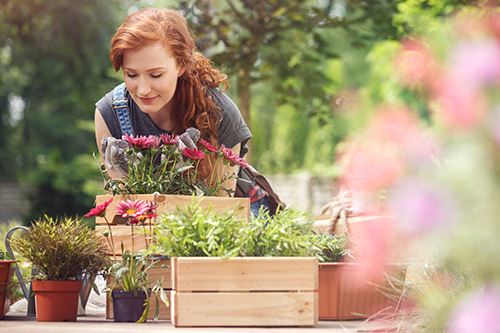
Planting Your Design
With a plan in-hand, you’re ready to execute your design. Install your starter plants and water them well. Soak the soil and let it drain it twice to be sure it’s thoroughly saturated. You should see water coming out the drainage holes. Monitor your plants closely at the beginning to make sure you’re watering them as much as they need. Let the top of the soil dry out a couple inches down before watering again. Depending on if your soil has time-release fertilizer or not, you will need to start feeding them at some point. We recommend our KVG Good Stuff Fertilizer, either the time-release form to incorporate into your soil before you plant, or the water-soluble form to mix with water and apply as needed, or both. Even time release fertilizer will be depleted by about August, especially for containers in the sun, and water-soluble fertilizer will then be needed. Shade plants don’t need much fertilizer.
Container Garden Inspirations
If you’re not sure what kind of container garden to grow, here are a few of our top choices for Kansas gardeners:
Container Gardening with Succulents
Requiring very little water or fertilizer, and rarely bothered by pests, succulents are the “King-of-Easy” when it comes to container gardening. Simply choose varieties that have contrasting foliage colors and textures to create your masterpiece. Almost all of our selections will perform equally well in sun or shade, and you can even overwinter your creation in a sunny window until it’s warm enough to go back outside next year!
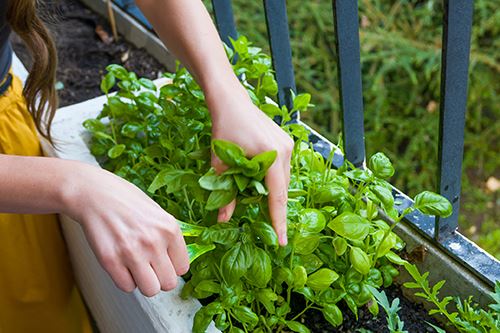 Container Gardening with Herbs
Container Gardening with Herbs
Herbs are a great choice for smaller container gardens. They’re beautiful and provide a flavor boost for your best dishes. There are so many herbs to choose from, but we recommend sticking with those you’ll use the most. Many herbs benefit from pruning, so picking ones you’ll use only makes sense. Choose from our top picks like basil, cilantro, mint, oregano, rosemary, and thyme, or go with less common herbs like lemon grass, catnip, garlic chives, or pineapple sage.
Container Gardening with Flowers
There are so many flowers to choose from, meaning there are endless combinations to try when working with them. For a typical container sizes, to ensure the best aesthetic, though, remember scale and color. To keep it simple, choose 3 different species of 3 different sizes with 3 different colors. Don’t forget to consider beautiful foliage plants, too. For recommendations, visit us at one of our locations, like our greenhouse in Andover.
With a well prepared, planned, and planted container garden, you’ll be sure to have your best and most beautiful season yet. Not only will you have a design you’ll love looking at, but you’ll have it all in the convenient and flexible package a container offers!

